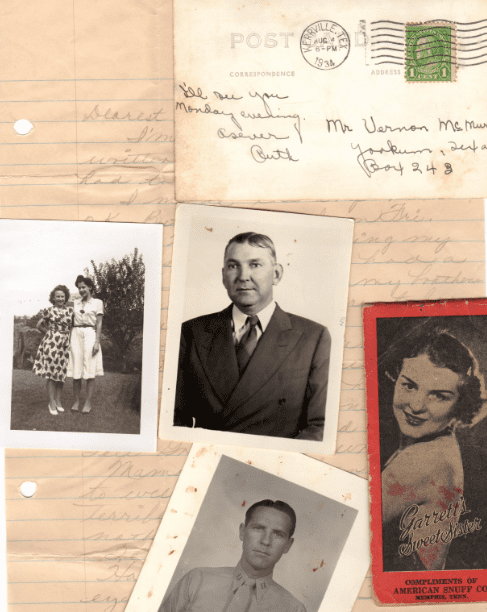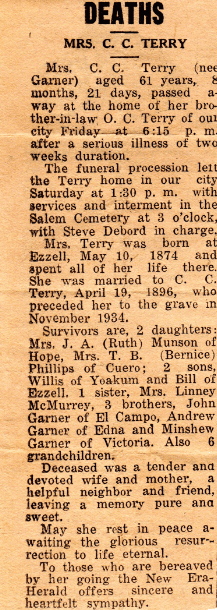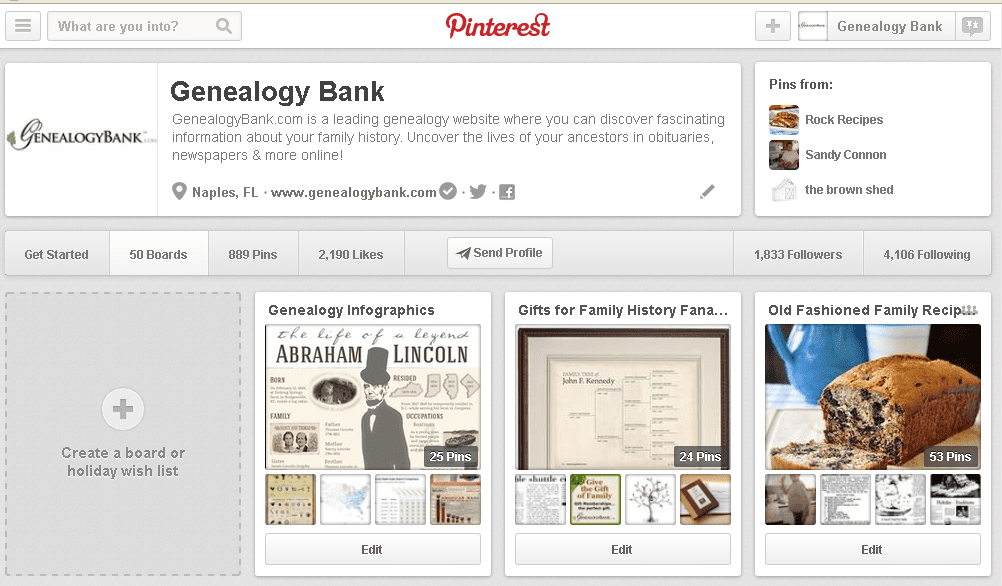Introduction: Gena Philibert-Ortega is a genealogist and author of the book “From the Family Kitchen.” In this guest blog post, Gena describes three goals to get your 2014 genealogy research off to a great start: document your home sources, share your research, and update your family history information.
Wow! 2013 seemed to fly by and now it’s already 2014. What genealogy goals did you accomplish last year? What are your research resolutions for this year? While you may still not get that 500-page family history tome written, or trace your family tree back to 1500, there are some smaller tasks you can accomplish in a reasonable amount of time in the upcoming New Year. No need to feel dread when you think of all you want to do. There are still little things that will help you accomplish your overall genealogy goals.
To get you started, here are three ideas for reasonable genealogy tasks in 2014.
Document Your Home Sources
Home sources are the things that make up one of the first steps in putting together a family history. By definition a home source is simply any item with genealogical value that is housed in your home (though it could also be a close family member’s home for our purposes). I know, you’re probably thinking you don’t have any home sources. Even if this is so, expand your idea of a home source by considering items that will one day tell your descendants about their ancestors (you!). Also, include in your definition of a home source anything you have gathered through your own research such as photos, document copies, and books.

One day you won’t be around to convey the importance of these home sources to your family. So plan now to document these items. How can you do that? Digitize these items using a scanner or a camera, then write a description and history of the item. Let family members know the provenance (if any), stories behind the item, and care instructions. Take this information and put together a scrapbook or upload the information to a cloud storage website, and share it with family members.
In some cases it can be difficult to find the information we need to document an inherited item. A good case in point is those closely-cropped newspaper clippings that get passed down. Typically there is no information about the name of the newspaper or the date the article appeared. Take keyword phrases from those newspaper articles and use them to search in GenealogyBank’s Historical Newspaper Archives. Once you locate the name of the newspaper and date, make sure to include that information when you digitize that clipping. Remember that some items, like newspaper clippings, degrade over time—so it’s important to preserve them now by scanning or photographing them.

Physical items, whether they are a prized heirloom, vintage family photos or newspaper clippings, help interest non-genealogists in their family story. Consider taking some time this year to preserve, document, and share them.
Start Sharing
Have you shared your family history research? What about those photos you scanned at your aunt’s home? Did you show everyone those cemetery photographs so that they can learn more about where their great-grandparents are buried?
Sharing your family history today is a lot different than in years past. Today, with the assistance of social media websites, cloud computing, and family tree websites, we can share all types of images with family far and wide.
Need ideas of where to share your family history information? How about using a social network website like Pinterest to upload family photographs? You can create virtual bulletin boards on Pinterest for cemetery photos, a specific family line, or photos of heirlooms. Invite family members to pin to these boards so that they can share what they know about the family. Need help learning more about Pinterest? See my GenealogyBank blog article 3 Steps to Using Pinterest for Your Family History.
Consider uploading documents and images to an online cloud storage website like Dropbox, Sugar Sync, Google Drive, or Microsoft’s SkyDrive. Share these private folders with family members. Once shared, they can then download what you have uploaded.
Don’t want to use social media or maybe you’re leery of uploading your family tree? Privacy, time, and effort are all considerations in online sharing of family information. Even if you don’t want to use online resources for sharing your family tree, don’t forget to make copies of documents, images and family history narratives that you have written. However you decide to share, remember that getting your family history in the hands of family members is beneficial. It helps to ensure that your genealogy research lives on after you have passed, and it provides a backup should something happen to your copy.
Review Your Genealogy Research
The beginning of the year is a good time to consider going back and reviewing those ancestors you researched when you first started working on your family history. Why? Since that time, new resources both on and off line have been made available, and most likely family members have shared additional information with you since you first started your research.
Choose one single family and then go through each person in that family and make sure that you have every census where they should appear, trace them in city directories, find appropriate newspaper articles, and verify everyone’s vital records information. As you enter all of your new findings in your genealogy database, make sure to cite your sources so that you and others you share your research with will know where to find that information.
Looking to work on your genealogy in 2014? Don’t get bogged down with large unrealistic goals. Genealogy should be fun. Choose a few small manageable tasks to kick off 2014. Take some time to document your home sources, share your research, and update your family history information. Here’s hoping you have many great genealogy discoveries in 2014!


Great information, Gena! I particularly loved the tip about typing newspaper-clipping keywords into GenealogyBank’s Newspaper Archives to find the source. And I agree that it’s the tangible items (photos, etc.) that often pique extended family members’ interest and initiate many storytelling sessions.
Thanks so much Dalene for your comments. Storytelling is such an important component in family history and ensuring that those stories can be passed down. I think many of us, me included, get so engrossed in the research that we forget that we do want to share these stories with our immediate family and generations to come.
Thanks for reading the post.
Gena